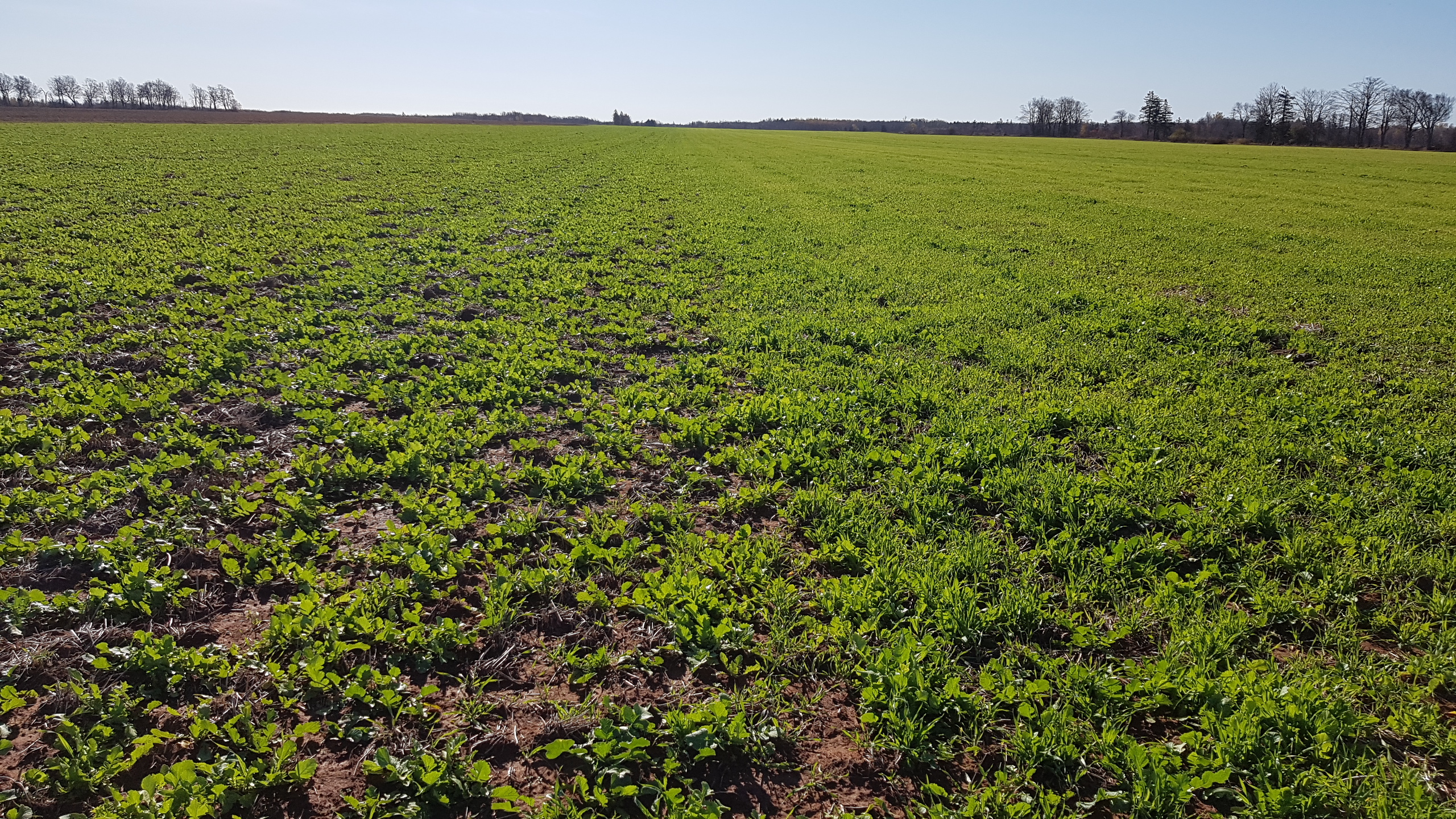
15 Sep Agronomy Update – Sept 15
Hi everyone,
I really wish that we all would have gotten a bit more rain out of yesterday. Surfing through stations from across the province, a lot of locations in Prince and Queens Counties got 3-5 mm of rain, but very few locations in Kings County got any…and that’s who needs rain the most. Hearing from quite a few growers that if they don’t get rain immediately, some of the late-maturing varieties will have a hard time sizing up. Earlier maturing varieties are already pretty much done. In the West and Central part of the Island, crops generally look as they should…many of the early varieties are top-killed or have gone down on their own, and the later-maturing varieties are definitely starting to lay down and lighten up…as they should as they enter peak bulking.
Late Blight Monitoring:
As you’ve seen in my updates this summer, there have been two different spore trapping networks in operation in PEI this summer. The AirSpore program at it’s peak had 20 sites across the province, and is starting to wind down now. The Spornado program had 10 sites for most of the year, and will have 7 sites after next week until Thanksgiving. This week, both of these testing programs identified late blight spores for the first time this year. It is the first time in the last few years that late blight spores have been found in the province.
On Tuesday, late blight spores were reported in the O’Leary area by AirSpore, from samples taken in the last few days. As the AirSpore sampling method involves active intake of air at sampling, we know that those spores were in the air on the day of sampling.
On Wednedsay, late blight spores were identified east of Charlottetown on the south shore of Eastern Queens County. In this case, the Spornado cassette was collected on Monday, so those spores could have been deposited on the cartridge anytime during the week before collection and testing.
Just because we find late blight spores, it does not mean that there is active late blight infection on potatoes in PEI. Spores can be blown long distances on the wind. Also, other host crops such as tomatoes in home gardens could be infected and shedding spores. Nonetheless, finding late blight spores is a good early warning indicator that growers should be very vigilant of their fields as we close out the growing season. It may help make the decision easier on whether to top-kill or not, especially if you’ve already met or exceeded your yield goals for a field/variety. For fields that will be kept green for another couple of weeks, ensure that you have a protective fungicide on those plants. Now may be the right time for a longer-acting product to get you through the next couple of weeks, when weather conditions might make it harder to spray when you want.
We will keep you up to date as we get more spore test results in the next couple of weeks.
Aphid Update:
In the PEIDAL Pest Update on Tuesday, Lorraine MacKinnon shared that Green Peach aphid numbers have increased dramatically in the last week, up from 2 aphids/trap to 18/trap last week. Green Peach aphids are known to be a high risk vector for spread of PVY. While plants are less likely to become infected late in the season compared to early in the season, green peach aphids are particularly good at spreading PVY compared to other species. A lot of seed fields have already been top-killed. Growers with seed fields that aren’t yet killed should remain vigilant as we close out the growing season and consider getting those fields top-killed soon.
Cover Cropping Update:
I’ve been getting lots of calls and emails about cover cropping, which I love to get. Keep them coming!
The weather forecast for the next 14 days indicates that temperatures will start to cool off, with daytime highs in the mid-teens rather than the low to mid 20s that we’ve enjoyed in the first half of September. This is a good reminder that we’ve likely hit the end of the window for planting brassica species (radish, mustard) for fall cover crops. From now on, winter cereals and spring cereals are the best bet.
If you’re broadcasting cereals as cover crops this fall, it’s advised to find some way to get that seed covered to maximize cover crop growth. A light scuffle with the harrows or a trip with a roller/roller baskets could be all that’s needed to ensure that cover crop gets going quickly, especially with how dry it’s been in many places.
I am still looking for some farms that are interested in setting up trials with us this fall after potato harvest. Specifically, looking on doing some trials on the following:
– comparing fall rye to barley or oats
– comparing different rates of fall rye
– comparing two different methods of cover crop establishment
– comparing winter barley to fall rye
Participants get a payment for their participation, and besides establishing the trial, all other work is done by us. Priority is on fields harvested early (Sept 15 to Oct 5) but we can look at some later trials, particularly if using fall rye. Contact me ASAP if interested.
